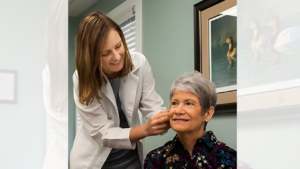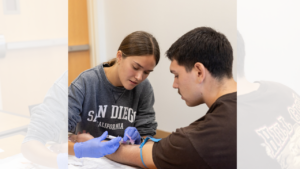As we move deeper into summer, blood donation numbers typically see a dip. With colleges out of session and families focused on vacations, giving blood often falls to the bottom of the priority list. This creates a critical need why blood donation, especially now, is so vital.
Many People Qualify But Few Donate
Kathy Lowry and Alexandria Jackson are territory representatives for LifeServe Blood Centers. Jackson shared a surprising statistic.
“While 62% of the population is eligible to donate blood, a mere 3% of that eligible group actually does. This stark contrast underscores a significant challenge. Generally, if you’re healthy and active, you’re likely eligible. Nonetheless, certain factors, like a history of cancer or taking specific medications such as anti-platelets or blood thinners, can preclude donation. Even antibiotics, if taken for an active infection, can temporarily disqualify you.”
What Makes The Participation Rate So Low?
Lowry explained a low participation rate is likely due to a combination of factors.
“First, a lack of awareness and a declining perception of blood donation as a civic duty. Many people simply don’t fully grasp the profound impact their donation has on patients until they or a loved one are directly affected. Second, many regular donors are motivated by personal experiences, such as a family member battling cancer or recovering from a severe accident. If someone is not similarly motivated, their chances of deciding to become a blood donor is diminished.”
Local Blood Donations Support Patients at CCMH
Jackson noted LifeServe Blood Centers operates as a community blood bank ensuring that blood donated within specific communities stays within those communities.
“There are other organizations to which you can donate blood. Those donations are more broadly focused on disaster relief, both within the U.S. and globally. While both serve crucial roles, understanding this distinction is key for donors who wish for their contribution to remain local. Hospitals, like Crawford County Memorial, are contracted with LifeServe to ensure a steady supply of local blood products.”
How Blood Donations are Used
The versatility of donated blood is truly remarkable. Lowry says blood is separated into various components, including red blood cells, plasma, and platelets, each serving different medical needs.
“A significant portion of collected blood goes to cancer patients undergoing treatment, helping with low platelet or red blood cell counts. Beyond cancer, blood products are vital for individuals on maintenance therapies for conditions like malformed red blood cells, which improve their quality of life. And, of course, trauma patients from accidents and even those undergoing elective surgeries rely on readily available blood products.”
Blood Donation is a Hidden Healthcare Necessity
Jackson described LifeServe as a “hidden” part of healthcare, working tirelessly behind the scenes.
“While television often depicts dramatic trauma scenes, the source of the life-saving blood is rarely discussed. In LifeServe’s lab in Sioux City, some days are quiet, but others are a frantic scramble to locate specific blood types for hospitals facing urgent needs. This constant demand highlights the absolute necessity of consistent donations.”
Donating is as Painless as Possible
Lowry shared what happens during the check-in process for a blood donation.
“Donors need to produce a photo ID, complete a quick questionnaire (parental consent for 16 and 17-year-olds), and then a brief screening where vitals and hemoglobin levels are checked. The LifeServe staff are trained to make donors comfortable. Donating blood is just one stick. While there’s a momentary poke, it’s far from the ‘torture chamber’ some might imagine. Many nervous first-time donors express surprise at how easy and quick the process truly is.”
Blood Donations at CCMH
If you’ve never donated blood before, please consider it. It is an extremely worthwhile and satisfying experience.
LifeServe Blood Drives holds a blood drive at Crawford County Memorial Hospital on the second Monday of each month. To sign up to donate, visit LifeServeBloodCenter.org or call 800-287-4903 to speak with their call center.
And if you’re a regular donor, thank you for your continued commitment. Your generosity literally saves lives, especially during these challenging summer months.


